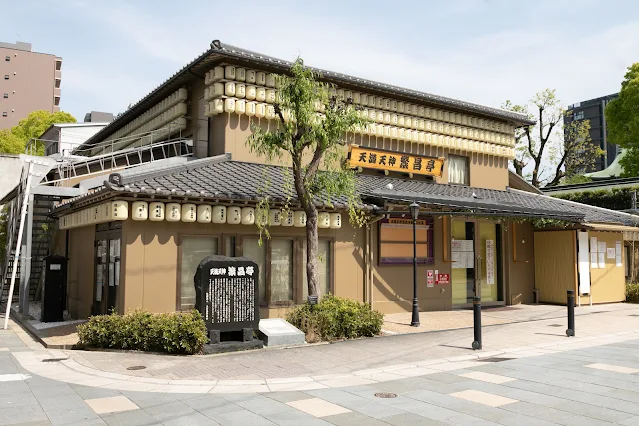
Kamigata Rakugo, born in Kyoto and Osaka during the Edo period, continues to captivate audiences with its lively storytelling, comical performances, and content that reflects contemporary society.
With a history spanning approximately 300 years, Kamigata Rakugo has evolved over time, yet its charm remains undiminished, endearing it to people even in the present day.
In this section, we will delve deeper into the history, nomenclature, and allure of Kamigata Rakugo.
{tocify} $title={Table of Contents}
Origin of Kamigata Rakugo
The origins of Kamigata Rakugo trace back to the mid-Edo period around 1700, with two distinct forms of storytelling emerging in Kyoto and Osaka: "Tsuji-banashi" and "Karukuchi".
These art forms evolved in yose (entertainment venues) during the late Edo period, laying the groundwork for what would become Kamigata Rakugo.
Name of Kamigata Rakugo
As for the nomenclature:
Until the Edo period, it was simply referred to as "Rakugo" or "Yosegei."
The term "Kamigata Rakugo" was first used in the July 1932 issue of the magazine "Kamigata."
Kamigata Rakugo has endured over time, maintaining its traditional elements and inclusive approach, even when faced with challenges such as World War II.
Unlike Tokyo rakugoka, who struggled after the war, Kamigata rakugoka found a permanent home in the Tenma Tenjin Hanjōtei, which opened in 2006.
Characteristics of Kamigata Rakugo
Kamigata Rakugo is characterized by light storytelling, comical acting, and content that reflects modern society.
The story unfolds one after another and the clever pauses keep the audience entertained.
Also, the comical performance that utilizes body language and facial expressions is one of the great appeals of Kamigata Rakugo.
Furthermore, many of the programs deal with problems and conflicts in modern society and are popular among a wide range of generations due to their easy-to-sympathize stories and modern language.
Lively and Comical Delivery
Kamigata Rakugo is known for its brisk and lively storytelling style.
Performers use a quick pace, emphasizing humor and engaging the audience with well-timed pauses.
Comedic gestures, facial expressions, and physical movements are integral to its charm.
Reflecting Contemporary Society
Kamigata Rakugo often incorporates themes relevant to modern life and societal issues.
Stories resonate with audiences due to relatable content and contemporary language usage.
Comedic Expressions and Gestures
Kamigata Rakugo performers use exaggerated body language, funny expressions, and unique vocal delivery.
Each piece may feature distinct gestures and mannerisms.
Examples include "死神" (The Grim Reaper) and "鹿角落とし" (The Antler Incident).
Ad-Lib Performances
In addition to scripted material, Kamigata Rakugo artists sometimes improvise.
Their individual personalities and interactions with the audience lead to varied and spontaneous performances.
Examples include "らくだ" (The Camel) and "野狐の幸兵衛" (The Fortunes of a Wild Fox).
Representative performances
Many masterpieces of Kamigata Rakugo have been loved throughout the ages.
Here, we will select some of them and introduce their detailed contents and appeal.
"Yashikibue" (The Whistle at the Samurai Mansion)
A thief sneaks into a samurai residence to steal valuables.
Unfortunately, he wakes up one of the household members, leading to a tense situation.
The thief desperately tries to escape while making comical excuses.
"Shinigami" (The Grim Reaper)
A man, facing imminent death due to illness, pleads with the Grim Reaper for more time.
The Grim Reaper, cold-hearted, seeks to take the man's life.
The interactions between the desperate man and the comical Grim Reaper evoke both laughter and melancholy.
"Akubi" (The Yawn)
Depicts communication challenges in modern society.
A man repeatedly yawns on a crowded train, annoying fellow passengers.
His oblivious behavior highlights the complexities of human relationships.
"Rakuda" (The Camel)
Follows a man's journey on a camel.
The unpredictable camel causes various troubles, from almost throwing the man off to getting lost.
The man's frantic reactions and the camel's comical movements entertain the audience.
"Gonbei" (Gonbei the Thief)
Set in Edo-era Osaka, featuring a skilled thief named Gonbei.
Gonbei uses wit and eloquence to overcome challenges.
Other masterpieces
Other notable Kamigata Rakugo works include:
- "Tsubunuke": Depicts a man trapped in a jar, struggling to escape.
- "Sumiso Tofu": Explores a couple's banter over tofu seasoned with vinegar.
- "Nukeben": Showcases a quick-witted man's adventures.
- "Shika Tsuresari": Humorously portrays a man whose antlers are stolen by a deer.
- "Jigoku Hakkei": Describes scenes from hell, with a unique narrative style.
The golden age of Kamigata Rakugo
During the late 18th and 19th centuries, 上方落語 (Kamigata Rakugo) flourished thanks to the remarkable efforts of master storytellers.
Among them, the first-generation 桂春團治 (Katsura Harudanji) and the third-generation 桂米朝 (Katsura Beicho) are celebrated figures who made significant contributions to Kamigata Rakugo.
First-Generation 桂春團治 (Katsura Harudanji)
Revered as the "God of Rakugo," Katsura Harudanji modernized Kamigata Rakugo.
His influence laid the foundation for Kamigata Rakugo and inspired many fellow storytellers.
Third-Generation 桂米朝 (Katsura Beicho)
A post-war giant of Kamigata Rakugo, Katsura Beicho captivated audiences with refined narration and profound performances.
Katsura Beicho revitalized Kamigata Rakugo for the modern era, leaving an indelible mark.
His passing marked the end of an era, as he was the last great beacon of Kamigata Rakugo.
Golden age influence
Thanks to the success of the first-generation Katsura Shundanji and the third-generation Katsura Beicho, Kamigata Rakugo has developed greatly and continues to attract many fans even today.
- Light speaking style and comical acting
- Content that reflects modern society
- The storyteller's own personality
These elements are the charm of Kamigata Rakugo and the reason why it continues to be loved throughout the ages.

Post a Comment